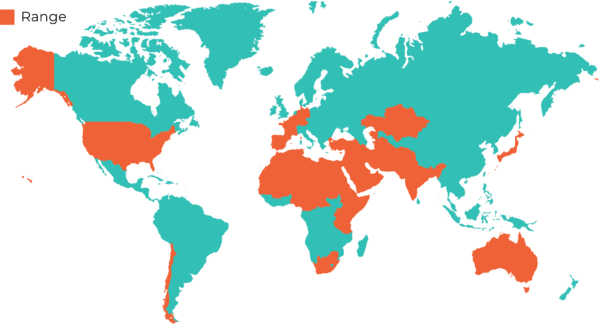Description
The Arabian Camel is a large, even-toed ungulate. A Dromedary camel has 1 hump and a Bactrian camel has 2 humps.
Distribution
Lives in North Africa/Middle East and are found in desert areas.

Lifespan
40 years.
Size
Stand 1.8m at the shoulder and 2.2m at the hump and weigh 300 - 700kgs.
Diet
Camels graze and browse almost anything and in drought will even eat carrion. The mouth is very sturdy, allowing them to eat thorny desert plants.
Habitat
Usually found in arid regions because of their special adaptations to dry conditions.
Breeding
Breeding occurs in winter. Females are sexually mature at 3 years, and male at 4 years. Males begin to rut a 3 years but are not sexually mature until 6 years. There is a 14 month gestation period.
Population
There are an estimated 700,000 in central Australia. These are descended from draft animals used in the 1800s.
Uses
Used as draft and riding animals. Camel milk is much prized by desert tribes.
Notes
The hump is a large fat storage area.
Do camels really spit? No - they squirt vomit!
Camels have a natural pacing gait, moving both legs on same side of body forward at same time.
Chewbacca’s voice in the movie Star Wars was based on the rumbling growl of a camel.
Camels can go for 1 week without water and several months without food. They can survive a 40% weight loss and then drink 120 litres in one drinking session!
The camelids of South America are closely related - Llama, Alpaca Guanaco and Vicuna.
骆驼 | ラクダ | 낙타